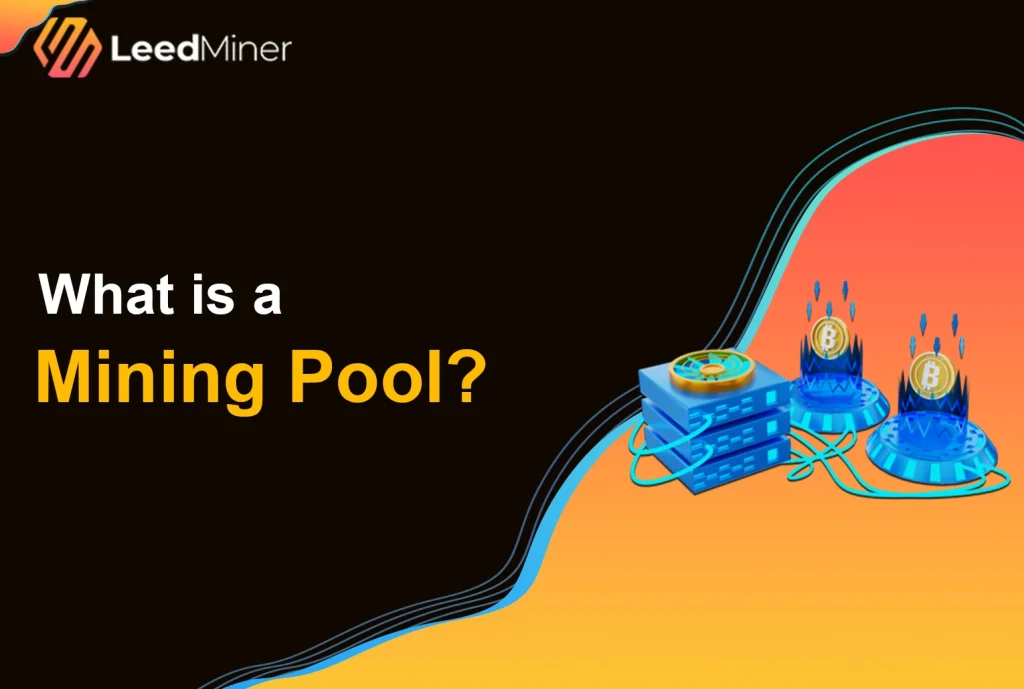What is a Mining Pool ?
Mining101
- tagwu

SUMMARY
Cryptocurrency mining is a competitive process where miners use specialized hardware to solve complex mathematical problems. The first miner to solve the problem adds the block to the blockchain and receives a reward. However, as mining difficulty increases and competition intensifies, solo mining has become increasingly unfeasible for most individuals.
To address this challenge, mining pools were created. A mining pool allows miners to combine their computing power to improve their chances of earning consistent rewards. But how do they work, and what are the pros and cons? Let’s dive in.
What is a Mining Pool
A mining pool is a group of cryptocurrency miners who share their computational resources over a network to increase the probability of finding a block. Instead of each miner working independently, they work together and agree to split the rewards according to the amount of work each contributes.
Think of it like a lottery syndicate: instead of buying one ticket on your own, you pool resources with others to buy many tickets, increasing your chances—though you also agree to split any winnings.
How Mining Pools Work
Mining pools divide the mining task into smaller jobs and distribute them to all participating miners. Each miner works on solving a portion of the cryptographic puzzle. When one miner finds a valid solution, the pool submits the block to the network and receives the reward.
To measure contributions, pools use a concept called shares. A share is proof that a miner contributed some computational work. Even if the miner didn’t find the block, submitting valid shares proves their effort.
The total block reward (including block subsidy and transaction fees) is then distributed among miners based on the number of shares they submitted.
Types of Mining Pool Reward Methods

There are several ways mining pools distribute rewards:
Pay Per Share (PPS)
Each share submitted earns a fixed payout, regardless of whether the pool finds a block. Provides stable income but has higher fees.
Proportional (PROP)
Rewards are distributed proportionally among miners based on the number of shares submitted during a mining round (until a block is found).
Pay Per Last N Shares (PPLNS)
Rewards are distributed based on a fixed number of the last shares submitted, encouraging long-term mining with the pool.
Each method has trade-offs between payout consistency, risk, and fairness.
Benefits of Mining Pools

More consistent income
Solo miners might mine for months with no reward. In a pool, payouts are smaller but more frequent.
Lower variance
Pools help reduce the luck factor by smoothing out earnings over time.
Accessibility
Even miners with modest hardware can participate and earn from their efforts.
Downsides of Mining Pools

Pool fees
Most pools charge a percentage (usually 1–2%) of your earnings.
Centralization risk
If too much hashrate is concentrated in a few pools, it threatens the decentralization of the network.
Operator trust
You must trust the pool operator to distribute rewards fairly and avoid downtime or fraud.
Popular Mining Pools
Some of the largest and most trusted mining pools include:
- Antpool
- F2Pool
- ViaBTC
- Binance Pool
When choosing a pool, consider factors like:
- Pool fees
- Payout method
- Server location and latency
- Reputation and reliability
- Total pool hashrate
How to Join a Mining Pool

- Choose a pool that fits your needs (reward method, location, fees).
- Register an account on the pool’s website (some pools are anonymous and don’t require this).
- Configure your mining software or hardware by entering the pool’s mining address and your unique worker ID.
- Start mining and monitor your dashboard to track hashrate and earnings.
Pool Mining vs Solo Mining
| Feature | Pool Mining | Solo Mining |
|---|---|---|
| Reward Frequency | Frequent, smaller payouts | Rare, large payouts |
| Equipment Needs | Low to medium | Very high |
| Risk | Low | High (luck dependent) |
| Setup | Easier | More complex |
Most miners today prefer pool mining due to its reliability and predictability.
CONCLUSION
Mining pools have revolutionized the way cryptocurrency mining works by making it accessible and efficient for the average miner. While they introduce certain trade-offs like fees and centralization risks, their advantages in terms of consistent payouts and lower barriers to entry make them the go-to choice for most miners.
Whether you’re just starting out or scaling your mining operation, understanding how mining pools work is essential for long-term success in the crypto mining ecosystem.
FAQs on Mining Pool
Why should I join a mining pool instead of mining solo?
Mining pools offer more consistent and frequent payouts, especially for miners without massive computing power.
How are rewards divided in a mining pool?
Rewards are split based on each miner’s share of the work, using methods like PPS or PPLNS.
Do mining pools charge fees?
Yes, most pools charge a fee (usually 1–2%) from your earnings to cover operational costs.






